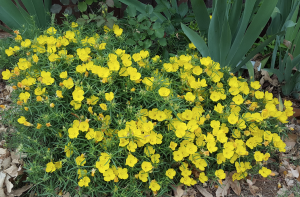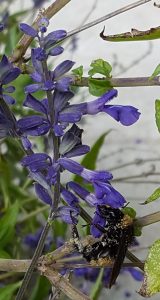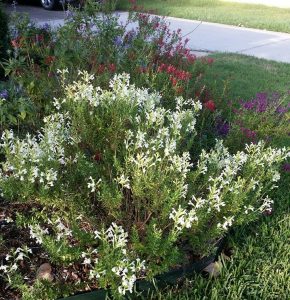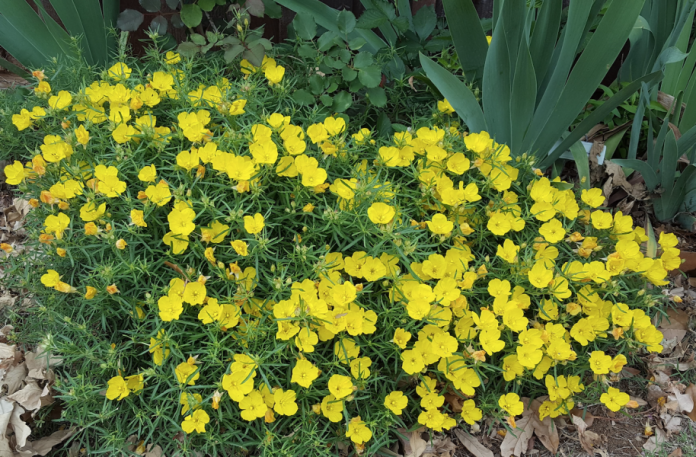
By Barbara Brown, Denton County Master Gardener Association
Spring is an exciting time for gardeners. After the brown, sad look of our landscapes during the winter, green is coming up everywhere as perennial plants begin their growing season. Big box stores and nursery shelves are filled with plants to entice shoppers. But wait. There is another option for finding landscape plants— spring plant sales held by local gardening associations.
When you visit these plant sales, you will see hard-to-find plants, native plants and often seedlings started by association members from their own gardens.
Most organization or association plant sales also have knowledgeable volunteers to answer questions on planting and care of your purchases. They want you to be successful so you’ll come back every year.
If you have difficulty deciding what to buy at plant sales, you can attend one of the many garden tours offered each spring. The DCMGA tour is 5/11, so tickets are a great Mother’s Day gift. On these tours, you will see how many different plants are placed in successful landscapes – and sometimes how things don’t turn out as the gardener expected!

Benefits of choosing native plants for your landscape
The U.S. Department of Agriculture defines a native plant as “a plant that lives or grows naturally in a particular region without direct or indirect human intervention.” Some authorities define native as a plant that has existed in an area for hundreds of years, while others extend the required time frame to thousands of years to allow for co-evolution of the plant with indigenous insects, birds and other flora.
Native and well-adapted plants are drought tolerant, heat tolerant and usually require little supplemental water once established. Native plants have successfully adjusted to the growing conditions of our area including soil, droughts, floods, excessive heat and the occasional ice and snow event. Because native plants evolved in North Texas, they are more resistant to common pests and diseases. Note: Texas has many growing regions, so be aware that not all plants native to the State of Texas are native to North Texas. Plants found in local sales, particularly “pass-along” plants are adapted to this region, and should do well for you.
Recommended plants for North Texas
Here are three resources that provide lists of North Texas native plants divided into categories including trees, shrubs, perennials, grasses and ground covers:
Texas A&M AgriLife Water University’s Top 100 Native and Adapted Plants for North Texas—http://agrilifeextension.tamu.edu/wp-content/uploads/2015/08/top-100-plants-for-north-texas.pdf
Trinity Forks Native Plant Society (Denton) “List of Native Plants”—https://npsot.org/TrinityForks/TrinityForksWeb/plants.html
Earth-Kind Plant Selector—http://ekps.tamu.edu/
Advice when attending plant sales
- Bring a cart. This makes it much easier to move plants through the rows of for-sale items, to the checkout and to your vehicle.
- Have a checkbook or cash available for your purchases. Although many non-profit organizations’ plant sales accept credit cards not all of them do.
- Check the plant tag or ask a volunteer about a plant’s sun requirements, eventual size and any cautions about the plant and its growing habits as some natives can be a bit invasive.
- Check out the association’s website for more information about its plant sale. Many sites will list the types of plants available, time of the event and provide a map to the location.
- Go early. Local plant sales are popular and some of the most desirable plants sell out quickly. The DCMGA Plant Sale on 5/4 regularly sells out.
- Look for “pass-along” plants. These are usually from members landscapes and may not look as full and fluffy as vendor plants do but you know they do well here because that member had enough to share.

Upcoming North Texas plant sales
April 20, Collin County Master Gardener Association, McKinney: ccmgatx.org
April 27, Native Plant Society Trinity Forks Chapter, Flower Mound: npsot.org/TrinityForks
April 27, Tarrant County Master Gardener Association, Arlington: www.tarrantmg.org
May 4, Denton County Master Gardener Association, Denton: dcmga.com
May 4, Native Plant Society of Texas, North Central Chapter: txnativeplants.org
November 2, Texas Discovery Gardens, Dallas: txdg.org/plant-sale



















